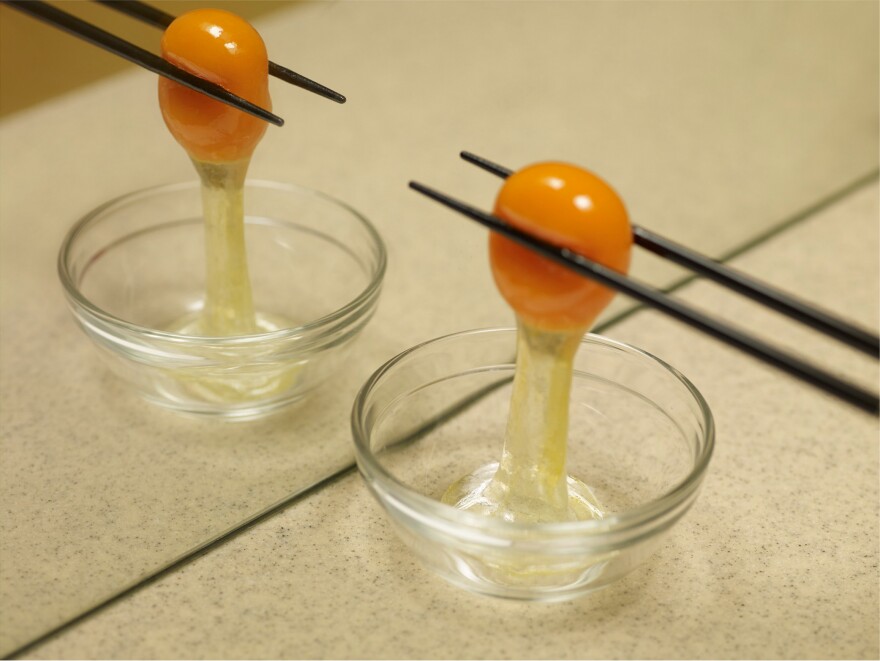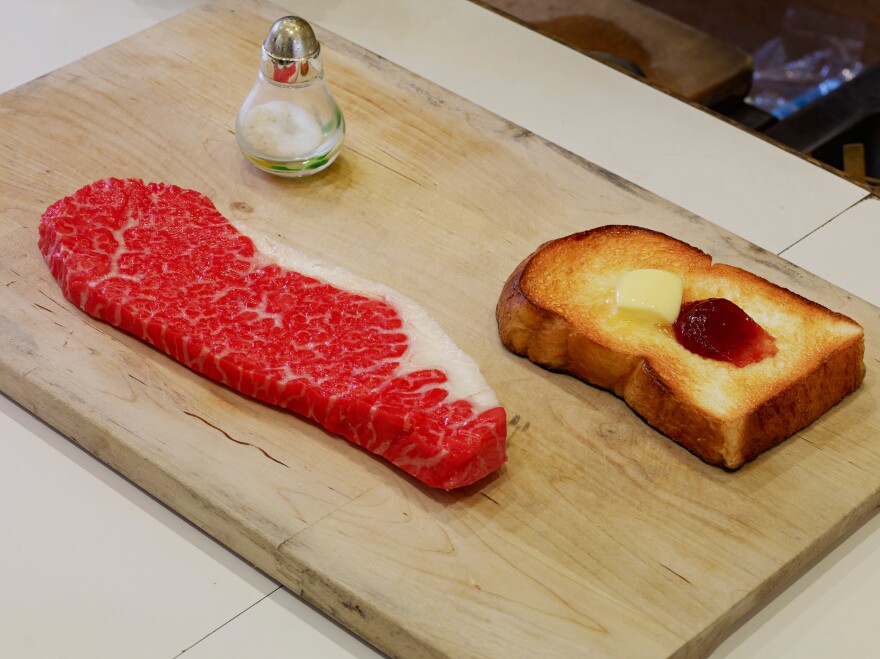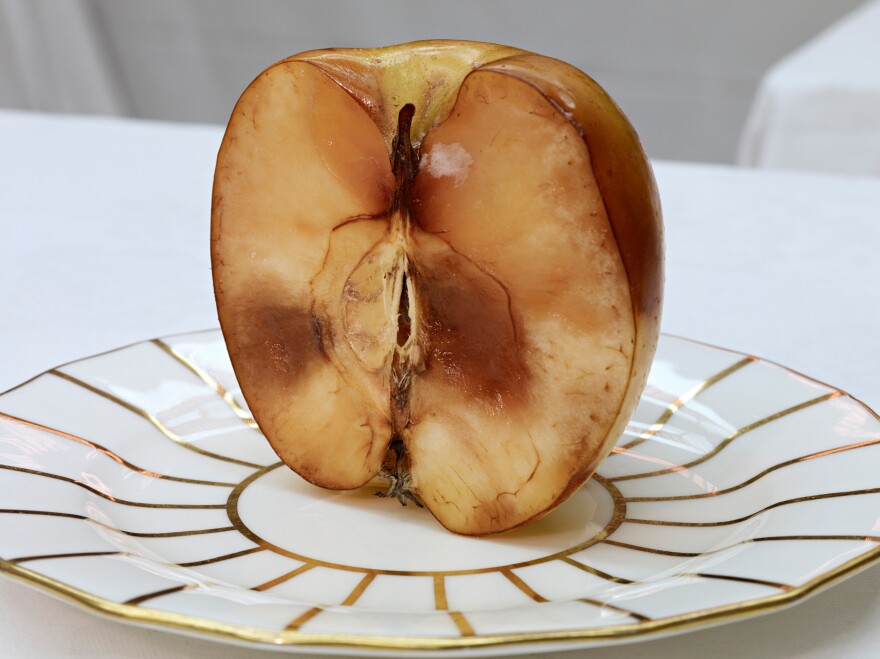From the windows of restaurants, grocers and department stores, they beckon: Perfectly swirled ice cream in a cone, elaborately whipped cakes topped with red strawberries, a glistening piece of raw fish atop rice.
They're meant to whet your appetite, but don't bite them: These are plastic display foods, and they're ubiquitous in Japan — designed to advertise the foods available for purchase inside. They're also big business: A fake mug of beer, for instance, can sell for U.S. $150, says photographer Norbert Schoerner.
Schoerner first encountered Japan's intricate display foods during his first trip to Japan in the 1990s. "I not only found it quite odd and surreal, but it also sort of triggered a fascination with the idea of the process and the whole culture that sits behind that," he says.
You might think of these display foods as "artisanal plastic" — that pineapple or pasta dish in polyvinyl chloride was likely hand-crafted by a highly trained artist. "There's quite an intricate craftsmanship that goes into that," Schoerner says.
His new book, Nearly Eternal, co-authored with art director Steve Nakamura, visually explores the questions of reality versus artifice such fake foods raise. "In a way, the book is less about food than about how we formulate our desire," he tells us.
Actually, Schoerner and Nakamura didn't so much author the book as create it: There are no words, save for this inscription from the Bible that opens the book — it's designed to "point people in the right direction," Schoerner says.
"All man's efforts are for his mouth, yet his appetite is never satisfied" — Ecclesiastes 6:7
I asked Schoerner for insights into some of the images.

Upon first glance, I assumed this image was set up for the shoot — with someone delicately gripping an egg yolk in between chopsticks. Come to find out, "this piece was not custom made for the shoot. The piece actually exists as a display food," Schoerner told me. It's all one plastic piece.
He says it's meant to mimic the raw eggs that are often dropped into soup ramens and hot broths in Japan to produce a slightly poached egg.
This image, the book's cover art, is "a very powerful image, because the fruit doesn't look artificial at all," he says — until you touch it. "If you actually pick one up, you realize how artificial they are." The praying mantis, on the other hand, looks fake, but it's real. "You'd think it'd be quite hard to wrangle, but it was really, really patient — the praying mantis. The lighting setup and placing the food was more complicated than getting the praying mantis."

"Both [the steak and the toast], I'd say, are classics within the environment of display foods," Schoerner says. "What's important about the image itself is mainly the contrast between those two elements, because they represent very different spheres of a culinary context. What it comes down to is that the toast and butter looks really amazing and really quite tasty, whereas the meat itself, it's certainly retained its artificial quality in the image."
That contrast between what seems real and fake creates tension in the image, Schoerner says. "We showed it to a few people and they go, 'Yeah, what's that? A picture of a piece of toast? What's the big deal?' "

"The product [coffee cup and cream] itself is probably one of the first ones I really noticed," while traveling in Japan, he says. "I don't really know why the culture has created surreal aspects for [the coffee cup product and the pasta product (at top)] because with all the other display foods, they strive for realism. ... Within the book, they very much function as a couple of marker points" to highlight that hey, this is fake food.

"I hate to tell you, that one is real," Schoerner says. In Japan, he says, there's a side culture — "championships and display shows — where people who make the display foods or people who do it as a hobby compare their craft. And within that culture, we've come across a few people who started to create rotten food. I mean, you can find tomatoes with ants crawling all over them, and moldy bananas or whatnot. So it's very odd. There is potential oxymoron contained in this practice [of creating rotten plastic]."

The image, he says, "plays with the notion of beauty, meaning this idea of a beauty ad with the fingernails. There's hardly any retouching in this picture, so the fingernails really look like that. They've got this lacquered sort of chrome-y texture to them. We really liked the contrast with the strawberry. ... It looks quite fake, I think."

"That's the only [plastic food] that we weren't allowed to take away [from the manufacturer]. So we shot that one at the factory. It's too heavy and too expensive and too fragile. I can't remember what the exact price was, but I think you're looking at about $500 of cake. "
Copyright 2021 NPR. To see more, visit https://www.npr.org. 9(MDAxODc1NzUzMDEyMTgyMjc0NzUxZmVhMQ004))



